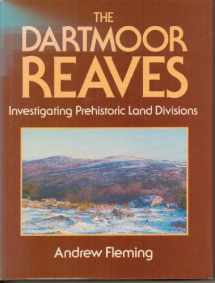
The Dartmoor Reaves: Investigating Prehistoric Land Divisions
ISBN-13:
9780713456653
ISBN-10:
0713456655
Edition:
1st British Edition
Author:
A. Fleming
Publication date:
1988
Publisher:
B. T. Batsford, Ltd., London
Format:
Hardcover
144 pages
Category:
Great Britain
,
European History
FREE US shipping
Book details
ISBN-13:
9780713456653
ISBN-10:
0713456655
Edition:
1st British Edition
Author:
A. Fleming
Publication date:
1988
Publisher:
B. T. Batsford, Ltd., London
Format:
Hardcover
144 pages
Category:
Great Britain
,
European History
Summary
The Dartmoor Reaves: Investigating Prehistoric Land Divisions (ISBN-13: 9780713456653 and ISBN-10: 0713456655), written by authors
A. Fleming, was published by B. T. Batsford, Ltd., London in 1988.
With an overall rating of 3.6 stars, it's a notable title among other
Great Britain
(European History) books. You can easily purchase or rent The Dartmoor Reaves: Investigating Prehistoric Land Divisions (Hardcover) from BooksRun,
along with many other new and used
Great Britain
books
and textbooks.
And, if you're looking to sell your copy, our current buyback offer is $0.36.
Description
First published in 1988, The Dartmoor Reaves is a classic story of archaeological fieldwork and discovery, and a winner of the Archaeological Book Award. This major new edition adds both colour illustrations and two substantial new chapters to the original groundbreaking text, which revolutionised our understanding of Britain's prehistoric landscapes. Dartmoor has long been known for the richness of its prehistoric heritage; stone circles, hut circles, massive burial cairns, and stone rows all pepper the landscape. In the 1970s a new dimension was added, with the recognition that the long-ignored reaves (ruined walls) are also prehistoric; Dartmoor now posed all sorts of questions about the nature of Bronze Age society. Andrew Fleming describes the critical moment when his own fieldwork picked up the pattern of the reaves, and he realised their true identity. His new chapters places Dartmoor's large-scale, planned, prehistoric landscapes in the context of other 'co-axial' field systems that have since been found elsewhere, and also discuss their meaning, in the light of the latest research on the Bronze Age.


We would LOVE it if you could help us and other readers by reviewing the book
Book review

Congratulations! We have received your book review.
{user}
{createdAt}
by {truncated_author}


